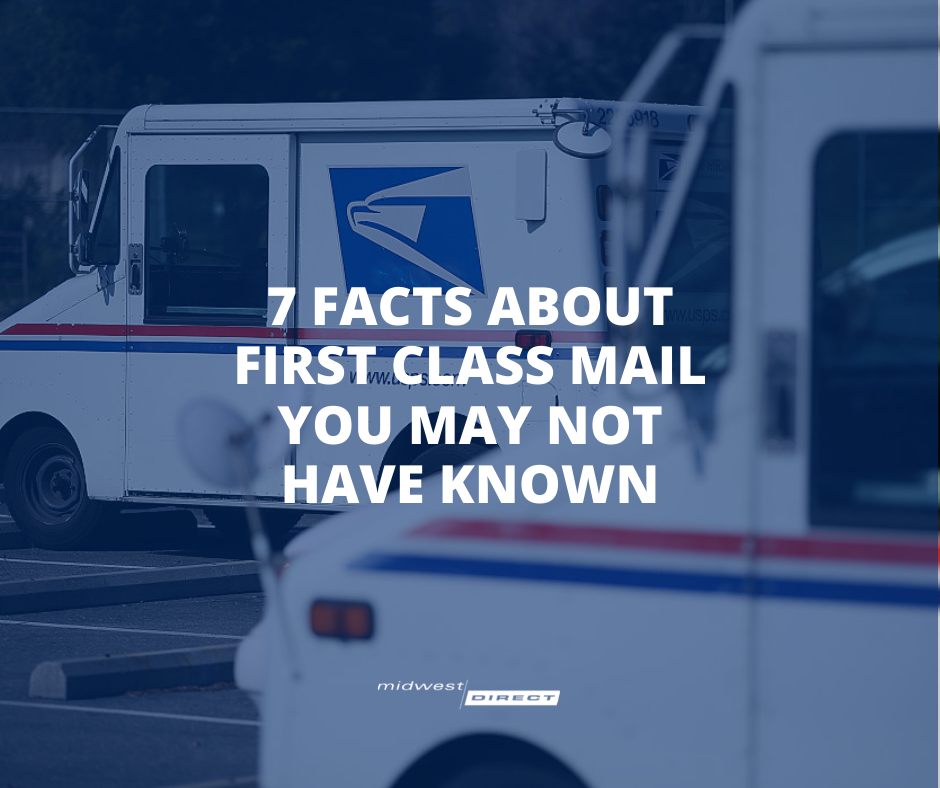When it comes to qualifications for mail classes and the best options for each mailer, the information out there can be a bit confusing, especially about First Class mail. The primary differences between First Class and Marketing mail are price, speed of delivery, and options for mail forwarding or returns on mail with outdated addresses. First Class mail is still less than the price of a regular postage stamp. The price remains the same regardless of where it goes domestically. However, it is not as simple as just requesting what class your mailpiece is sent out. If you are wondering what qualifies your mailpiece for First Class, or what the advantages and disadvantages are, here are some facts you might find helpful:
1) First Class mail is typically delivered in 2-4 business days.
Delivery times for First Class mail remain consistent, even during peak mailing times because the USPS gives it priority over other classes of mail. With Marketing mail, the delivery times are inconsistent and the USPS processes it on a “time available” basis. If timing is your main concern for your mailing, First Class mail maybe your best option.
2) First Class mail is required for any invoices, credit cards, or personalized correspondence.
First Class mail is touched less and processed quickly, keeping the utmost integrity of the mailpiece. This is also why First Class mail is more expensive than Marketing mail, rising incrementally with each ounce. Any time-sensitive information that falls into any of the above categories, must be sent First Class.
3) First Class mail can still reach people with outdated addresses.
If a First Class mailpiece is undeliverable, the USPS will forward the mail to the correct address, or return it to the sender, sometimes at no charge. This gives mailers who mail First Class a big advantage. Returned mail can cost anywhere from $3 to $50 and cause unnecessary delays and troubles for the mailer. Therefore, mailing First Class can be beneficial to avoid the charges of returned mail.
4) If cost is the primary concern (especially for large volume mailers) and the mailings do not have time-sensitive information, First Class may be an unnecessary expense.
First Class mail rises incrementally with every ounce, whereas Marketing mail allows up to 3.3 ounces per piece without any increase in postage. If the information is not time-sensitive, mailing at the Marketing Mail rate is more cost-efficient, especially for large volume mailings.
5) Add options like Certified Mail to First Class.
Certified Mail provides evidence of mailing so that you know when your items are delivered to the correct recipient. This also includes information about the date and time of delivery or attempted delivery. You can also combine this service with Return Receipt to get an electronic or hard copy of the recipient’s signature, proving they received your mailpiece.
6) First Class is best for peak mailing season.
In 2019, the USPS was projected to deliver 800 million packages between Thanksgiving and New Year’s Day. Because First Class mail is given priority over Marketing mail (that could take between 5-20 days), it is the best choice for time-sensitive mail during the holidays.
7) Requirements for First Class mail.
- Minimum weight: Paper weight of 70lb
- Flats maximum weight: 13 oz. (over this, it becomes Priority Mail)
- Letter maximum weight: 3.5 oz.
- Minimum quantity for commingle pricing: 500 pieces
Questions? Our experienced mail professionals can help you understand the qualifications of First Class mail including mailpiece design, quantities, and timelines. Contact us today to learn more about First Class mail and determine the best solution for your next mail project.

